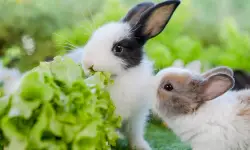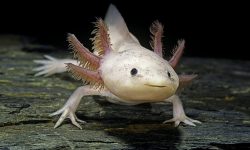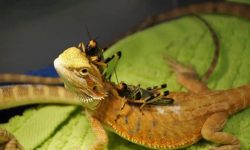Beavers rank among North America’s most extraordinary wildlife. Renowned for their incredible ability to construct dams, canals, and lodges, these industrious animals transform and sustain entire ecosystems through their natural engineering talents. Yet, one of the most intriguing questions about them remains: What do beavers eat? While most people assume these industrious animals eat only wood, the truth is much more diverse and fascinating.
Beavers are strict herbivores with a surprisingly varied diet that changes throughout the seasons. They feed on different types of trees, shrubs, aquatic vegetation, and even a few unexpected foods depending on what’s available in their habitat. Their diet not only sustains them but also influences the landscapes they create.
In this guide, we’ll explore 20 surprising foods that beavers love in the wild, explaining what they eat, why they eat it, and how their dietary habits shape wetlands, rivers, and forests across the continent.
Understanding How Beavers Eat

Beavers don’t just gnaw wood for fun—they eat parts of the trees they cut. Their powerful, ever-growing incisors help them strip bark and access the nutritious inner layer called cambium, which is rich in sugars and nutrients. During warmer months, they enjoy soft aquatic plants and tender leaves, but in the cold winter, when vegetation dies back, beavers rely on stored branches under the ice.
Interestingly, beavers have special gut bacteria that help them digest cellulose, the fibrous material in wood. This digestive adaptation allows them to survive on plant matter that most animals can’t process. Beavers are remarkably efficient at turning trees into energy, using every part of what they harvest—both for food and for building their homes.
20 Surprising Foods Beavers Eat in the Wild
1. Aspen (Populus tremuloides)
Aspen trees are the absolute favorite food of beavers across North America. They consume nearly every part of the tree — bark, leaves, and young twigs — but the inner bark, known as cambium, is the most nutritious. This soft layer provides essential sugars that fuel beavers’ active lifestyle year-round.
In autumn, beavers fell aspen trees and store the branches underwater, securing them for winter meals when vegetation is scarce. These food caches ensure survival through the cold months. Interestingly, by cutting older aspen trees, beavers help new shoots regenerate, naturally sustaining their future food supply.
2. Willow (Salix alba)
Willows are among the most common and accessible foods for beavers. They thrive near rivers and ponds, offering tender shoots and flexible branches that are easy to chew. The bark contains natural sugars and moisture, keeping beavers hydrated during warmer seasons.
Beavers particularly enjoy the younger branches and leaves of willow trees, which are rich in nutrients. Even during winter, willow wood remains a dependable food source when other plants die back. Regular feeding also stimulates new willow growth, maintaining the wetland ecosystem’s balance.
3. Birch (Betula spp.)
Birch trees grow abundantly in colder regions, making them an important food source for northern beaver populations. Beavers feed on the bark, twigs, and branches, often mixing birch with other softwoods like aspen and alder.
The inner bark of birch offers moderate nutrition, while its flexible stems make it easy for beavers to transport and store underwater. Birch is also valuable for building material, and beavers often cut it in late autumn to stockpile for both food and dam repairs.
4. Red Maple (Acer rubrum)
Although not a top preference, red maple becomes essential when aspen and willow are less available. Beavers typically target young maple saplings with thinner bark, which are easier to strip and chew.
Maple bark is moderately nutritious and provides fiber that aids digestion. In mixed forests, beavers often cut smaller maple trees while leaving mature ones, subtly shaping the composition of their woodland habitat over time.
5. Cottonwood (Populus deltoides)
Cottonwood trees are tall, softwoods found along rivers and floodplains — perfect locations for beaver colonies. The bark and inner wood are high in energy and easy to digest. Beavers are often seen felling cottonwood trunks and dragging smaller branches to water for storage.
In many wetlands, cottonwoods play a dual role: they feed beavers and supply sturdy dam material. Their quick regrowth after cutting makes them a renewable food source in areas heavily influenced by beaver activity.
6. Alder (Alnus spp.)
Alder trees are known for their adaptability to waterlogged soils, which makes them a frequent meal choice for beavers. They eat the bark, shoots, and young stems, especially during spring when alder growth is at its peak.
Beavers also use alder wood extensively for building dams and lodges because it is lightweight and durable underwater. Feeding on alder helps maintain open water areas and stimulates regrowth that benefits other wetland wildlife.
7. Oak (Quercus spp.)
Hardwoods like oak are not a primary choice because they are dense and harder to gnaw. However, beavers do consume oak bark, tender shoots, and occasionally acorns during autumn to store energy for winter.
In oak-dominated forests, beavers often feed selectively, taking younger twigs or damaged trees. Their occasional oak consumption provides variety in their otherwise fibrous diet and contributes to balanced nutrition during seasonal shifts.
8. Cherry (Prunus serotina)
Black cherry trees occasionally appear on the beaver’s menu, particularly when other softwoods are limited. Beavers prefer the soft outer bark and branches, which are easier to chew and digest.
Cherry trees contain natural sugars in the cambium, making them a flavorful option. Beavers tend to cut small cherry trees near water sources, using their stems for both food and building material when needed.
9. Poplar (Populus spp.)
Poplar species, including hybrid poplars, are another favorite of beavers. The soft wood, smooth bark, and high nutrient content make them an ideal food source throughout the year.
Beavers frequently cut poplar trunks into smaller pieces for transport. These branches are used both for feeding and dam construction, offering versatility in daily life. In managed forests, poplars often regenerate quickly after beaver activity, promoting sustainable coexistence.
10. Cattails (Typha spp.)
Cattails are a key component of the beaver’s summer diet. Found in shallow water, they provide soft shoots, leaves, and roots that are easy to harvest. The underground rhizomes contain valuable starch and nutrients.
Beavers eat cattails fresh or collect them for short-term storage near the water’s edge. In doing so, they help control overgrown cattail populations, maintaining a balanced wetland ecosystem.
11. Water Lilies (Nymphaea and Nuphar spp.)
Water lilies offer more than just beauty to ponds—they provide a rich food source for beavers. The starchy rhizomes are dug up and eaten as a carbohydrate-heavy meal, while leaves and stems serve as secondary food.
These aquatic plants grow close to beaver lodges, making them a convenient and energy-efficient source of nourishment. Their presence also supports the pond habitat that beavers create through dam building.
12. Pondweed (Potamogeton spp.)
Pondweed grows naturally in still or slow-moving waters, and beavers eat it directly while swimming. The tender stems and floating leaves are packed with minerals and moisture.
During warmer months, pondweed becomes a refreshing snack for beavers and a valuable hydration source. Its abundance in beaver ponds also supports fish and other aquatic creatures that share their habitat.
13. Duckweed (Lemna minor)
Tiny but mighty, duckweed is a floating green plant that forms dense mats on pond surfaces. Beavers consume it freely in summer, often while floating or swimming through it.
Duckweed is surprisingly nutritious, rich in protein, and easily digestible. This quick-growing plant replenishes itself constantly, providing a sustainable food source in beaver-managed wetlands.
14. Ferns and Grasses
When trees are abundant but leafy greens are scarce, beavers turn to ferns, sedges, and marsh grasses for variety. These plants are rich in vitamins and moisture, helping maintain digestive health.
Beavers graze on these soft greens mostly in late spring and early summer. They often trim vegetation along pond edges, keeping channels open and water flow steady for dam maintenance.
15. Water Shield (Brasenia schreberi)
This aquatic plant has slippery, floating leaves and a gelatinous coating that deters many animals—but not beavers. They eat the leaves and tender stems, especially when the plant grows thickly around their lodges.
By feeding on water shield, beavers naturally manage its spread, preventing it from smothering other aquatic vegetation. This contributes to maintaining open water habitats beneficial for amphibians and fish.
16. Ragweed (Ambrosia trifida)
Ragweed is an unexpected but occasional addition to the beaver diet. Found near riverbanks and floodplains, its tall stalks provide roughage during late summer and early fall.
Beavers may chew ragweed stems when aquatic plants are less abundant. Although not nutritionally rich, it adds texture and variety, showing how adaptable beavers can be in their feeding habits.
17. Garden Vegetables
In suburban or rural areas near waterways, beavers sometimes wander into gardens to feed on vegetables like lettuce, carrots, and cabbage. These plants are tender, sweet, and easy to chew, making them irresistible.
While this opportunistic feeding behavior can cause conflicts with homeowners, it’s a sign of the beaver’s adaptability in human-altered landscapes. Simple deterrents like fences can prevent such garden raids.
18. Corn and Field Crops
Beavers living close to farmland may occasionally feed on corn, soybeans, or alfalfa near irrigation ditches or ponds. These crops offer high-energy carbohydrates that help during seasonal transitions.
Although not a primary food source, crop feeding increases when wild plants are scarce. Beavers usually eat the lower stalks and leaves rather than the full ears of corn.
19. Privet (Ligustrum sinense)
Chinese privet, an invasive shrub in many U.S. wetlands, has become an unexpected beaver food. They feed on its bark and stems during winter when other vegetation is limited.
By consuming privet, beavers unintentionally help control this invasive plant’s spread, benefiting native ecosystems. This demonstrates how their feeding behavior can occasionally aid habitat restoration.
20. Shrub Leaves and Buds
In spring, when shrubs begin to leaf out, beavers feast on tender leaves and buds from dogwood, alder, and willow bushes. These provide vital nutrients after a long winter of woody meals.
Beavers often browse on shrubs growing along the banks near their lodges. Their selective feeding encourages healthy regrowth, contributing to the dynamic renewal of riparian ecosystems each year.
Seasonal Changes in Beaver Diet
Spring and Summer
When ice melts and plants flourish, beavers enjoy soft vegetation like aquatic plants, grasses, and leafy greens. These foods are high in nutrients and water, keeping them hydrated during hot months.
Fall
As temperatures cool, beavers begin cutting down trees and gathering woody branches for their winter food cache. They prefer flexible, nutrient-rich woods like willow, aspen, and alder.
Winter
Once ponds freeze, beavers rarely venture onto land. They survive on food caches stored underwater near their lodges. These consist mainly of twigs and bark from trees they cut earlier in the year.
This behavior ensures that beavers can feed safely beneath the ice without exposure to predators.
How Beavers Shape the Environment Through Feeding
Beavers are called ecosystem engineers for good reason. Their feeding habits transform landscapes by:
- Creating ponds that benefit fish, frogs, and waterfowl.
- Increasing biodiversity by flooding areas that become wetlands.
- Recycling nutrients as decaying wood enriches the soil.
By cutting trees and eating vegetation, beavers open sunlight to the forest floor, allowing new plant growth. In this way, their appetite actually helps sustain the health and balance of their habitat.
Do Beavers Ever Eat Meat or Fish?
A common misconception is that beavers might eat fish or small animals. In reality, beavers are strict herbivores. Their digestive systems are not built to handle animal protein. Every part of their diet comes from plants—trees, leaves, bark, and aquatic vegetation. Even when living near fish-filled ponds, they show no interest in hunting or scavenging.
Can Beavers Survive Without Trees?
While aquatic plants are important, trees are essential to a beaver’s survival. They rely on trees not only for food but also for building material. Without access to trees like aspen and willow, a beaver colony will eventually relocate to an area with a more abundant food supply. In treeless regions, beavers may survive temporarily, but long-term success depends on woody vegetation.
Why Beavers’ Diet Matters for Humans and Nature
Understanding what beavers eat is crucial for conservation and land management:
- Wetland restoration projects often rely on beavers to reestablish natural hydrology. Knowing their food preferences helps choose the right tree species to plant.
- Coexistence strategies near human areas include planting non-preferred species like conifers or using wire fencing to protect trees.
- Climate resilience: Beavers’ dam-building and feeding habits store water, reduce erosion, and create refuges for wildlife—vital in drought-prone landscapes.
The more we understand their diet, the better we can manage both beaver populations and the ecosystems they sustain.
FAQs About What Beavers Eat
Do Beavers Eat Wood?
Beavers don’t eat the hard outer wood—they eat the inner bark (cambium) beneath it. That layer contains sugar and nutrients that provide essential energy.
Do Beavers Store Food?
Yes. In autumn, they cut and sink branches underwater near their lodges. These caches remain accessible all winter beneath the ice.
Do Beavers Eat the Same Things Everywhere?
Their diet varies slightly depending on location. In northern climates, woody plants dominate; in southern regions, aquatic and herbaceous plants make up a larger portion.
Why Do Beavers Prefer Aspen?
Aspen has soft bark, high sugar content, and grows abundantly near waterways—making it easy and rewarding for beavers to harvest.
Conclusion
Beavers may be famous for their dams, but their diet tells an equally compelling story. From soft aquatic plants to tough hardwood trees, these animals consume a surprisingly wide range of foods that reflect both adaptability and intelligence.
Their selective feeding shapes ecosystems, creates wetlands, and sustains countless other species. Understanding what beavers eat helps us appreciate their crucial role as nature’s architects—and reminds us that every tree they cut, every stem they chew, serves a larger purpose in the cycle of life.






